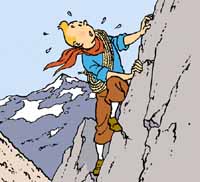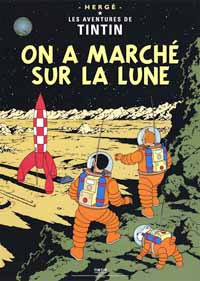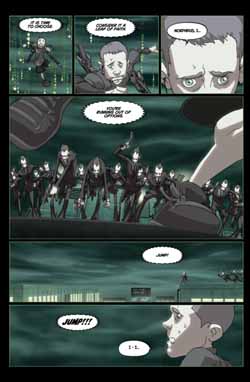Though never achieving the "art" status and constantly shelved as "disposable" pop culture, comics are the best bet in understanding the non-photoreal effect.
All the things we experience in life can be separated into two realms, the realm of the concept and the realm of the senses.
(Understanding Comics)
During the course of my research, I had categorised the use of non-photorealistic rendering styles into comics, animation, movies and games.
But in a moment of revelation, it dawned upon me that story-telling mediums like animation, movies and games has its roots in comic books.
The influence is sufficiently great that I found it imperative to put comics as a major section and through understanding comics, try to figure out the profound influence it had on the other mediums.
Though never achieving the "art" status and constantly shelved as "disposable" pop culture, comics are the best bet in understanding the non-photoreal effect.
Many of the principles that define "Why comics are the way they are?" can be applied to these other mediums as well.
|
Storytellers in all media know that a sure indicator of Audience Involvement is the degree to which the audience identifies with a story's characters.
And since Viewer-Identification is a specialty of cartooning, cartoons have historically held an advantage in breaking into the world popular culture.
On the other hand, no one expects audiences to identify with brick walls or landscapes and indeed, backgrounds tend to be slightly more realistic.
In some comics, this split is far more pronounced. The Belgian "clear line" style of Herge's Tintin combines very
iconic characters with unusually realistic backgrounds.
|


|

|
"Comics panels fracture both time and space, offering a jagged staccato rhythm of unconnected moments.
But closure allows us to connect these moments and mentally construct a continuous, unified reality." - Scott McCloud.
This particular comic fact can be evident in movies too.
Movies have fragmented continuous reality in the form of separate scenes which are then edited to create the closure, the continuous, unified reality.
|
Icons
Comics are all about icons and our ability to identify icons. To explain better, let us take the example of the cartoon. Through experience we can say that we respond to a
cartoon as much or more than a realistic image. Why is that? Cartooning is a form of Amplification through simplification. When we abstract an image through
cartooning, we are not so much eliminating details as we are focusing on specific details. By stripping down an image to its essential "meaning", an
artist can amplify that meaning in a way that realistic art cannot. Simplifying characters and images toward a purpose can be an effective tool for storytelling in any medium. Thus it becomes
not merely a way of drawing, but a way of seeing. This ability of the cartoons to focus our attention on an idea is universal for non-photorealistic renderings.
Clarity of idea communication through beautiful art is the gist of non-photorealism.
Motion
The futurists in Italy and Marcel Duchamp in France began the systematic decomposition of moving images in a static medium. Duchamp, more concerned with the
idea of motion than the sensation, would eventually reduce such concepts as motion to a single line. Though sequential art survived for many centuries without depicting
motion, once the genie was out of the bottle it was perhaps inevitable that more and more efficient means would be sought. At first, this search centered on multiple
images in sequence. And somewhere between the futurists dynamic movement and Duchamp's diagrammatic concept of movement lies comics' Motion Line'.
This is one thing that connects comics to animation. Animation is about motion - the study and creative application of motion. But where animation is motion in dynamic form,
comic book is motion in static form. But they both depict motion.
Over the years, these lines became more refined and stylized, even diagrammatic. Eventually, in the hands of heroic fantasy arttists like Bill Everett and Jack Kirby, those same
lines became so stylized as to almost have a life and physical presence all their own. .
.
"Embedded in all pictures of the visible world are the seeds of the invisible. The seeds of Expressionism and Synaesthetics." - Scott McCloud, Understanding Comics

 Home
Home

 Home
Home
